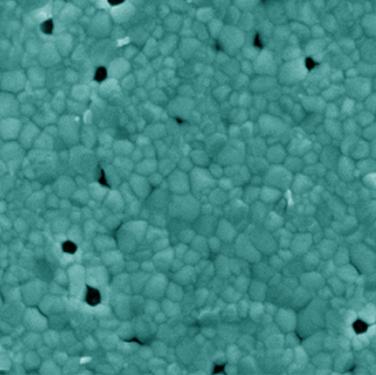Crossref Citations
This article has been cited by the following publications. This list is generated based on data provided by
Crossref.
Seok, Sang Il
and
Guo, Tzung-Fang
2020.
Halide perovskite materials and devices.
MRS Bulletin,
Vol. 45,
Issue. 6,
p.
427.
Koech, Richard K.
Ichwani, Reisya
Martin, Julia L.
Oyewole, Deborah O.
Oyelade, Omolara V.
Olanrewaju, Yusuf A.
Sanni, Dahiru M.
Adeniji, Sharafadeen A.
Grimm, Ronald L.
Bello, Abdulhakeem
Oyewole, Oluwaseun K.
Ntsoenzok, Esidor
and
Soboyejo, Winston O.
2021.
A study of the effects of a thermally evaporated nanoscale CsBr layer on the optoelectronic properties and stability of formamidinium-rich perovskite solar cells.
AIP Advances,
Vol. 11,
Issue. 9,
Qiu, Longbin
He, Sisi
Jiang, Yan
and
Qi, Yabing
2021.
Metal halide perovskite solar cells by modified chemical vapor deposition.
Journal of Materials Chemistry A,
Vol. 9,
Issue. 40,
p.
22759.
Jin, Mengqi
Li, Huilin
Lou, Qiang
Du, Qing
Huang, Qingsong
Shen, Zhitao
Li, Fumin
and
Chen, Chong
2022.
Toward high‐efficiency stable 2D/3D perovskite solar cells by incorporating multifunctional CNT:TiO2 additives into 3D perovskite layer.
EcoMat,
Vol. 4,
Issue. 2,
Ou, Dingwei
Liu, Yifeng
Chen, Qianqiao
and
Zhong, Qin
2022.
Preparation of low-cost perovskite solar cells with high-quality perovskite films in an ambient atmosphere.
Nanotechnology,
Vol. 33,
Issue. 1,
p.
015202.
Li, Yu
Lin, Zedong
Wang, Jian
Xu, Rongguo
Zhang, Kai
Wang, Gaopeng
Liu, Tongfa
Zhou, Huanping
Xiao, Shuang
and
Yang, Shihe
2022.
Amine Salts Vapor Healing Perfected Perovskite Layers for NiOx Based p‐i‐n Solar Cells.
Advanced Functional Materials,
Vol. 32,
Issue. 41,
Hu, Chunqi
Gong, Huaping
He, Yiqing
and
Margherita, Alessandro
2022.
Data driven identification of international cutting edge science and technologies using SpaCy.
PLOS ONE,
Vol. 17,
Issue. 10,
p.
e0275872.
Xiao, Shuang
Qian, Wei
and
Yang, Shihe
2023.
Interfaced Structures between Halide Perovskites: From Basics to Construction to Optoelectronic Applications.
Advanced Energy Materials,
Vol. 13,
Issue. 33,
Le, Thi-Huong
Tran, Ngoc-Anh
Fujii, Akihiko
Ozaki, Masanori
and
Dao, Quang-Duy
2023.
Effects of p-type dopant on photovoltaic performance of pervoskite solar cells using phthalocyanine-tetrabenzoporphyrin hole transport materials: A combined theoretical and experimental study.
Thin Solid Films,
Vol. 787,
Issue. ,
p.
140134.
Xu, Fang
Zou, Yongtao
Dai, Yanmeng
Li, Mu
and
Li, Zeren
2023.
Halide perovskites and high-pressure technologies: a fruitful encounter.
Materials Chemistry Frontiers,
Vol. 7,
Issue. 11,
p.
2102.
Xie, Xiangfan
Zeng, Shengqiao
Zhou, Cangtao
and
Xiao, Shuang
2023.
Fabrication strategies for high quality halide perovskite films in solar cells.
Materials Chemistry Frontiers,
Vol. 7,
Issue. 21,
p.
5309.
Zhang, Kai
Shen, Yang
Cao, Long-Xue
Su, Zhen-Huang
Hu, Xin-Mei
Feng, Shi-Chi
Wang, Bing-Feng
Xie, Feng-Ming
Li, Hao-Ze
Gao, Xingyu
Li, Yan-Qing
and
Tang, Jian-Xin
2024.
Nondestructive halide exchange via SN2-like mechanism for efficient blue perovskite light-emitting diodes.
Nature Communications,
Vol. 15,
Issue. 1,
